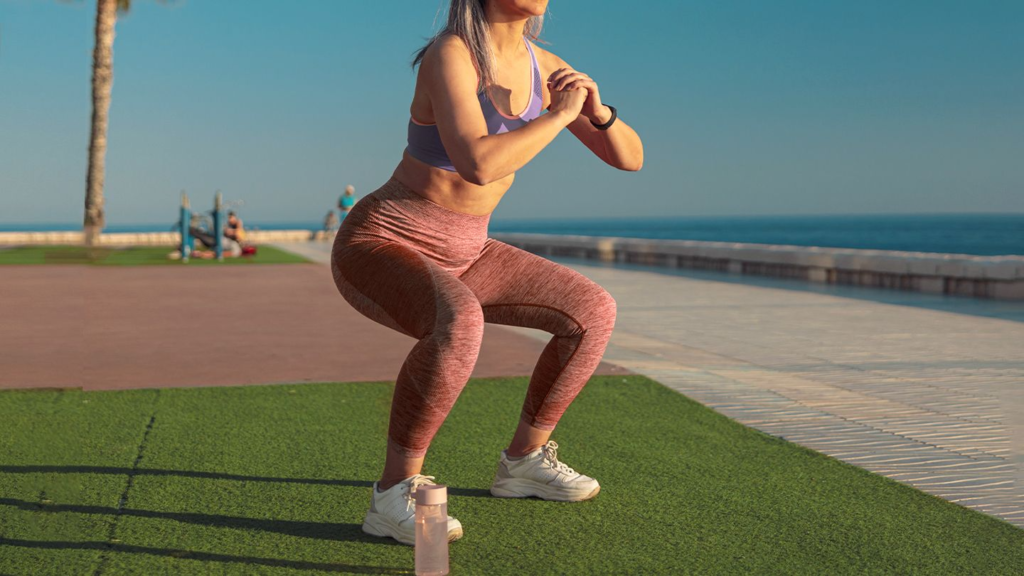Muscle soreness, a dull ache, or sharp pain following a tough workout can leave you feeling stiff and sluggish. But fear not; there are ways to combat this discomfort and get you back to feeling your best. This blog post will explore fantastic tips to relieve muscle soreness, helping you recover faster and get back to crushing your fitness goals.
What is muscle soreness?
Muscle soreness, also known as delayed-onset muscle soreness (DOMS), is the achiness or stiffness you feel in your muscles after a particularly strenuous workout, especially if it’s a new activity or a significant increase in intensity. It typically lasts 6 to 12 hours after exercise and can peak around 24 to 48 hours, making you feel tight and uncomfortable. While it might be unpleasant, this soreness is a sign of adaptation—your muscles are undergoing tiny tears and repairs, which help them grow stronger.
Tips to relieve muscle soreness
Battling muscle soreness doesn’t have to be a losing fight. There are many techniques to relieve sore muscles and get you back on track. Like walking or light yoga, gentle movement helps flush out lactic acid and improves blood flow. Applying heat through a warm bath or heating pad can further relax tight muscles.
Remember the power of self-massage with a foam roller or tennis ball to directly target trigger points and relieve sore muscles. By incorporating these strategies, you can conquer muscle soreness and return to feeling your best.
1. Muscle Massage
When relieving muscle soreness, muscle massage shines as a powerful tool. A professional massage therapist can use techniques like deep tissue or Swedish massage to target tight muscles. By applying pressure and kneading the tissue, muscle massage helps to increase blood flow, which delivers fresh oxygen and nutrients to aid recovery. Additionally, muscle massage can break down lactic acid buildup, a major contributor to muscle soreness, leaving you feeling looser and less achy.
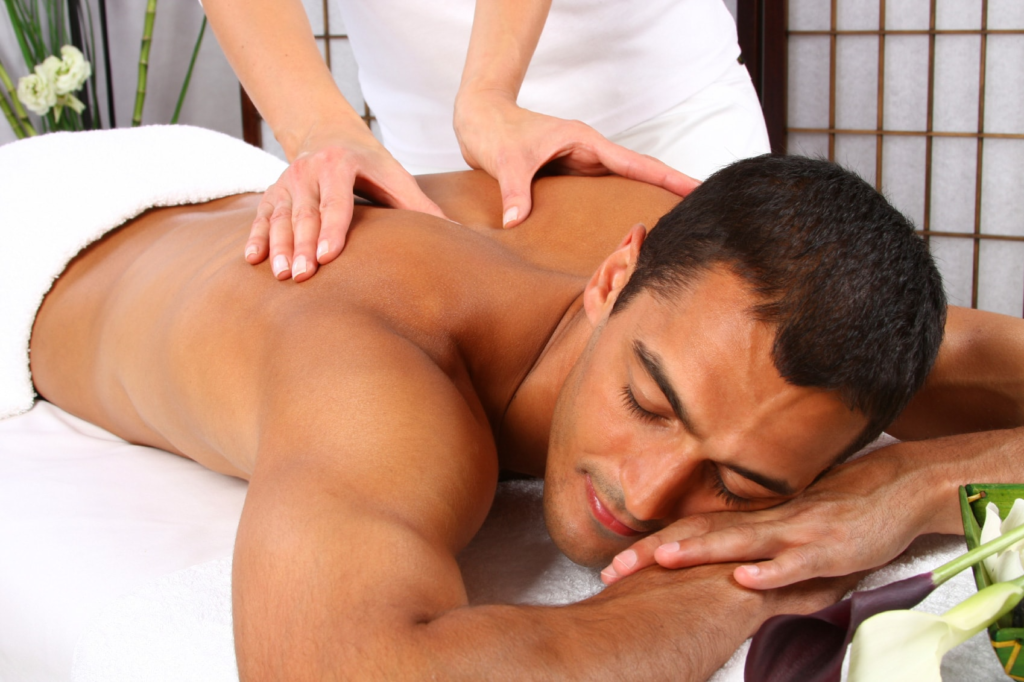
2. Pain medication
Over-the-counter pain medication can be a helpful weapon in your fight against muscle soreness. Medications like ibuprofen or acetaminophen can reduce inflammation and dull the pain signals reaching your brain.
However, it’s important to remember that pain medication addresses the symptom, not the root cause. Always follow the recommended dosage, and be sure to consult with your doctor before using pain medication regularly, especially if you have any underlying health conditions.

3. Active recovery
Remember to underestimate the power of active recovery to relieve muscle soreness. This approach involves incorporating low-intensity movement after your workout. A brisk walk, some light swimming, or even gentle yoga can all be forms of active recovery. Keeping your blood flowing and gently moving your muscles can help flush out lactic acid buildup and promote muscle repair. Active recovery is a double win: it helps relieve sore muscles while keeping your fitness routine on track.
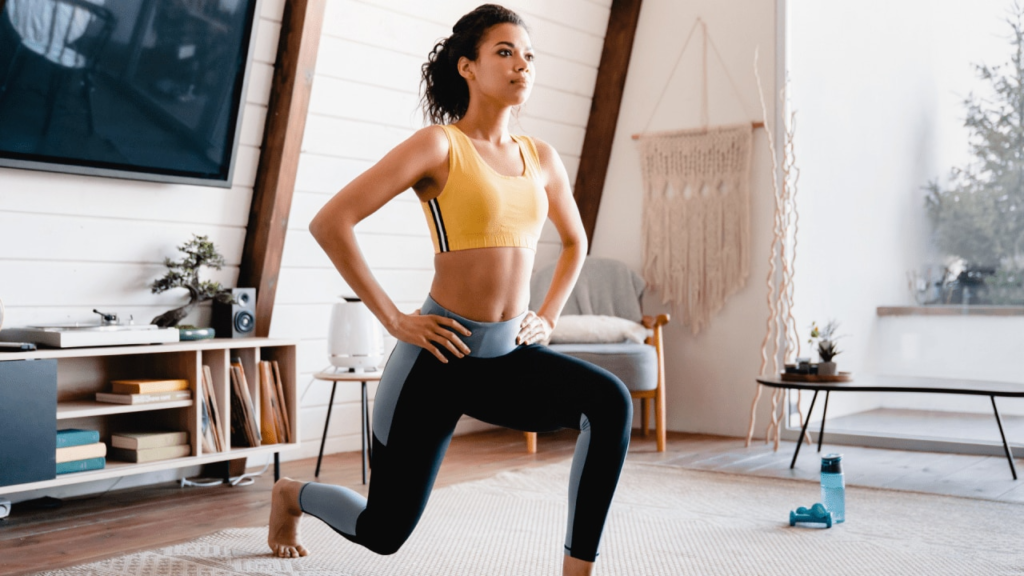
4. Foam rolling
For targeted relief of muscle soreness, foam rolling is a fantastic technique you can do yourself. This self-myofascial release method involves applying pressure to your muscles with a foam roller. By slowly rolling over tight areas, foam rolling helps break down adhesions and trigger points, contributing to muscle soreness.
This improved circulation brings fresh blood and nutrients to the targeted muscles, aiding repair. Foam rolling can be a bit uncomfortable at times, but regular use is a powerful tool to relieve muscle soreness and improve your overall flexibility.

5. Hydrate
Staying hydrated is crucial for maintaining a pain-free body. When you don’t hydrate enough, fluids are pulled from your tissues, leading to aches and pains. But there’s a simple solution. Properly hydrating throughout the day can keep your cartilage soft and pliable, protecting your joints and muscles. So, ditch the discomfort and hydrate regularly for a healthier, pain-free you.
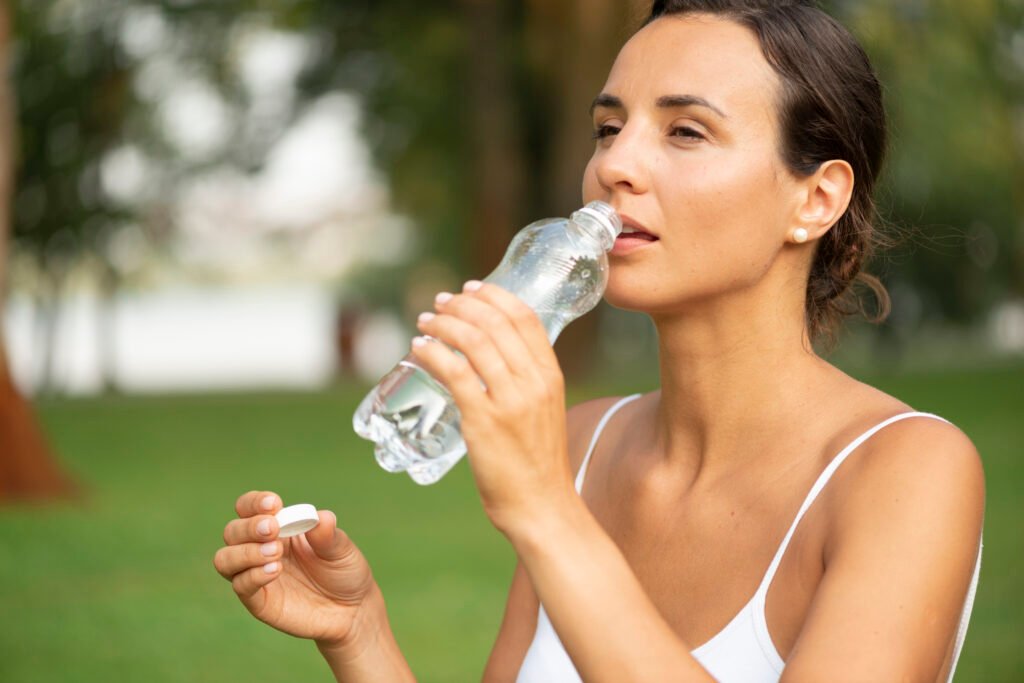
6. Stretch
While the jury’s still out on whether stretching definitively reduces muscle soreness, it can certainly bring some relief. After a challenging workout, gentle stretching can help improve blood flow to your muscles, aiding healing. Aim for static stretches, holding each position for 30 seconds, and focus on the major muscle groups worked during your exercise.
Remember to listen to your body; stretching shouldn’t be painful, so ease into each position and avoid bouncing. Regular stretching can improve your overall flexibility, making future workouts more enjoyable.
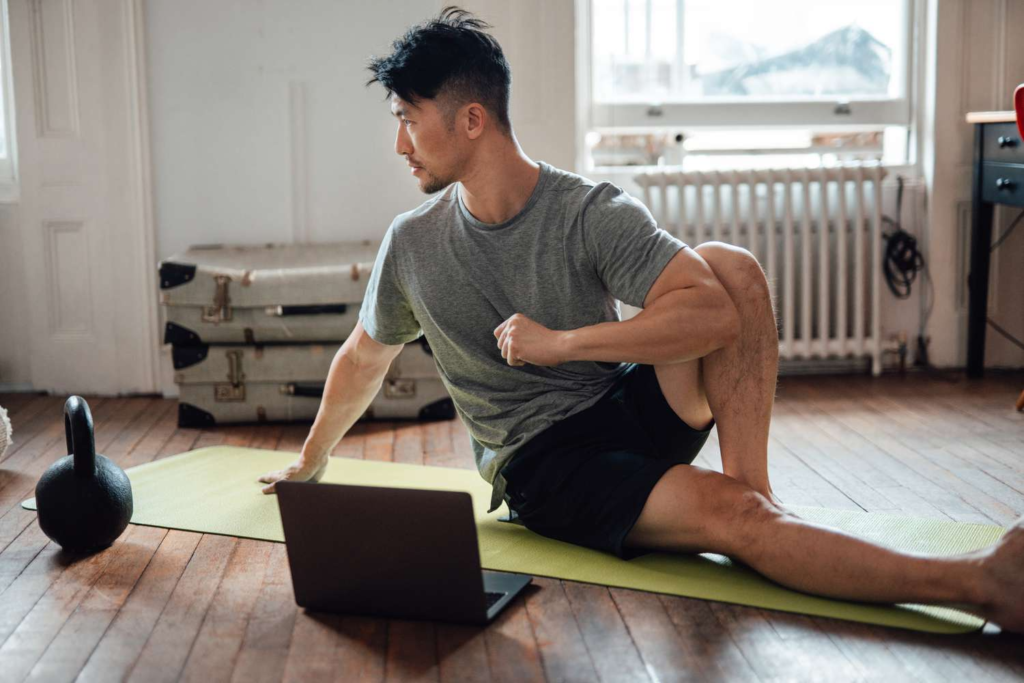
7. Ice bath
Ice baths can be a great way to soothe sore muscles after a challenging workout. The cold water constricts your blood vessels, reducing inflammation and swelling and contributing to that achy feeling. This can leave you feeling refreshed and ready to tackle your next challenge.
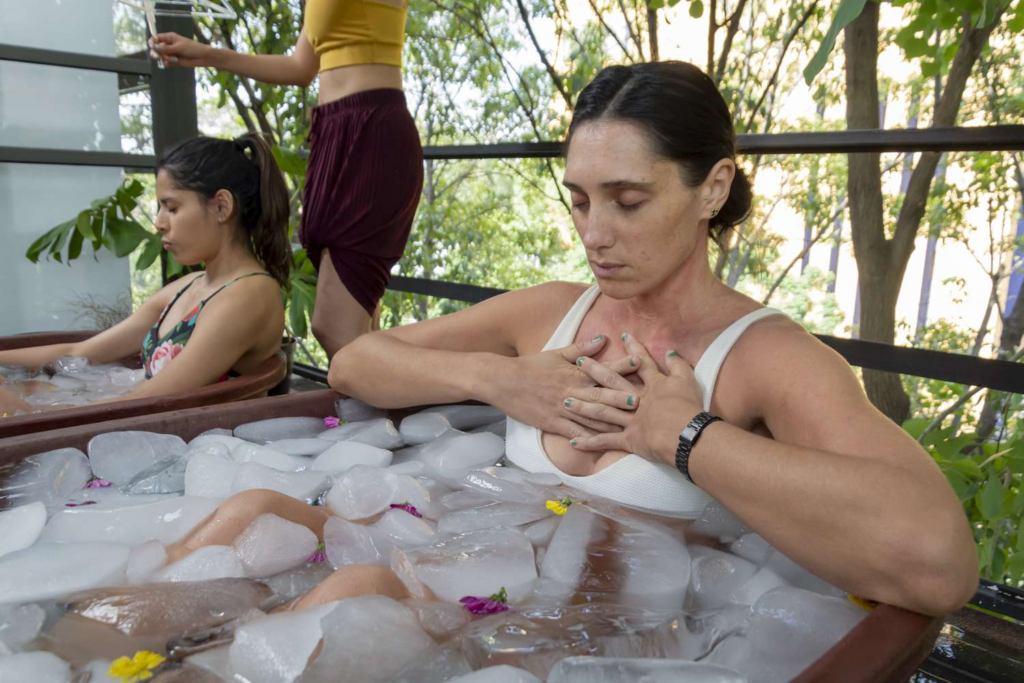
8. Heat therapy
Heat therapy can be your best friend when muscle soreness sets in after exercise. You increase blood flow by applying heat directly to the sore area, like with a heating pad or a warm compress. This influx of blood carries away byproducts of exercise that contribute to stiffness and discomfort. Heat therapy can also help relax tense muscles, providing much-needed relief and promoting healing.
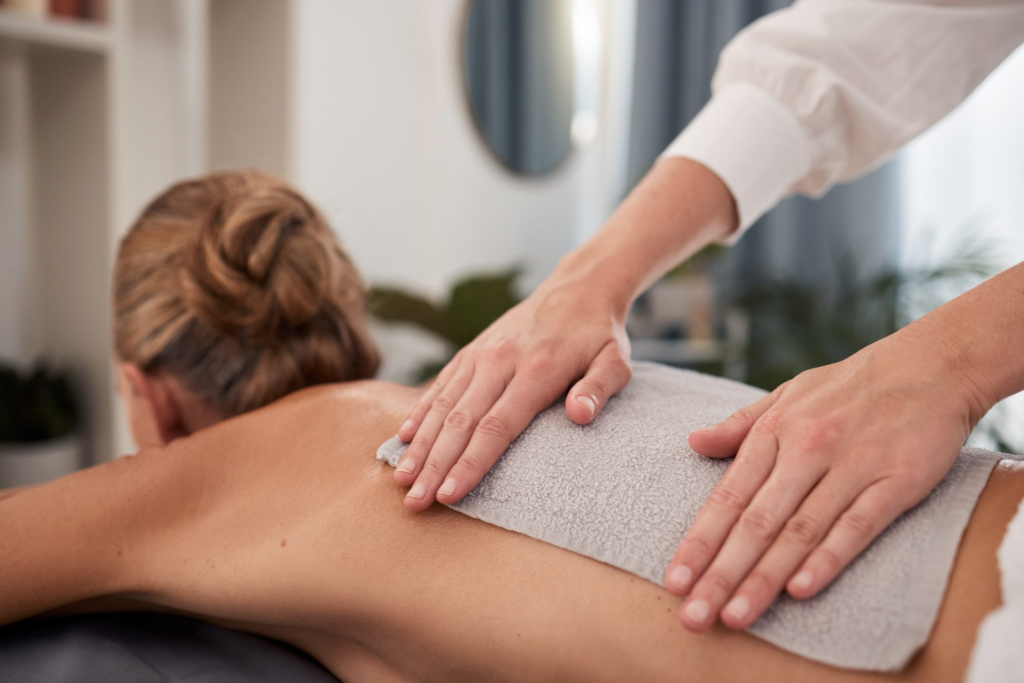
9. Warm bath
After a strenuous workout, a warm bath can be a simple yet effective way to combat muscle soreness. Sinking comfortably in warm water, ideally between 33°C and 38°C, helps relax tense muscles.
This warmth also promotes increased blood flow throughout your body. This improved circulation delivers nutrients and oxygen to your muscles, aiding in the removal of waste products that contribute to soreness.
So, the next time you’re feeling achy, consider taking a warm bath and letting your worries melt away along with your muscle tension.
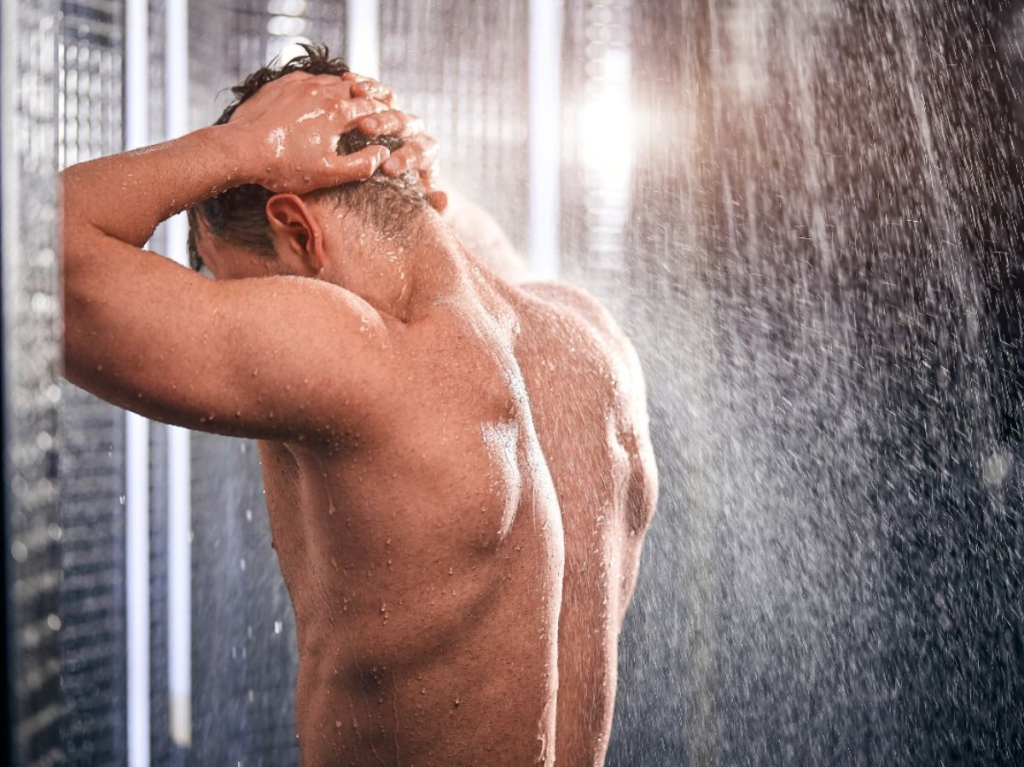
10. Heat
Heat can be your muscle soreness’s best friend. Applying heat therapy increases blood flow to the sore area, which delivers oxygen and nutrients to aid healing. This improved circulation also helps flush away lactic acid, a waste product contributing to muscle aches. So next time you feel sore, grab a heating pad or take a warm bath and let the heat work magic.
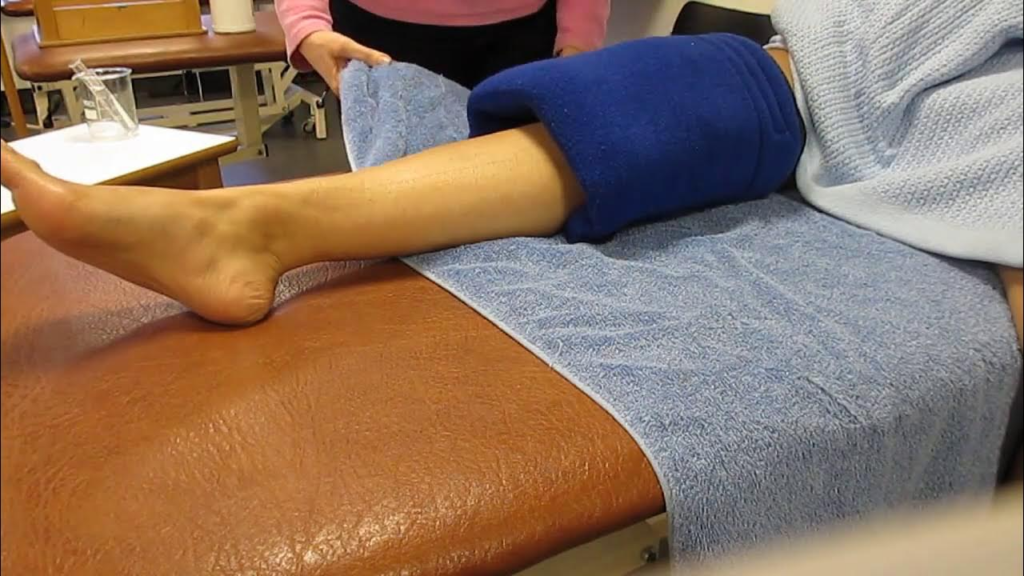
11. Ice packs
Ice packs can be a helpful tool to relieve muscle soreness, especially after a challenging workout or minor injury. The cold temperature constricts blood vessels, reducing swelling and inflammation that contribute to pain. Apply an ice pack wrapped in a towel for 15-20 minutes to numb the area and ease discomfort. Remember, ice is best for recent soreness or injuries, not chronic pain.
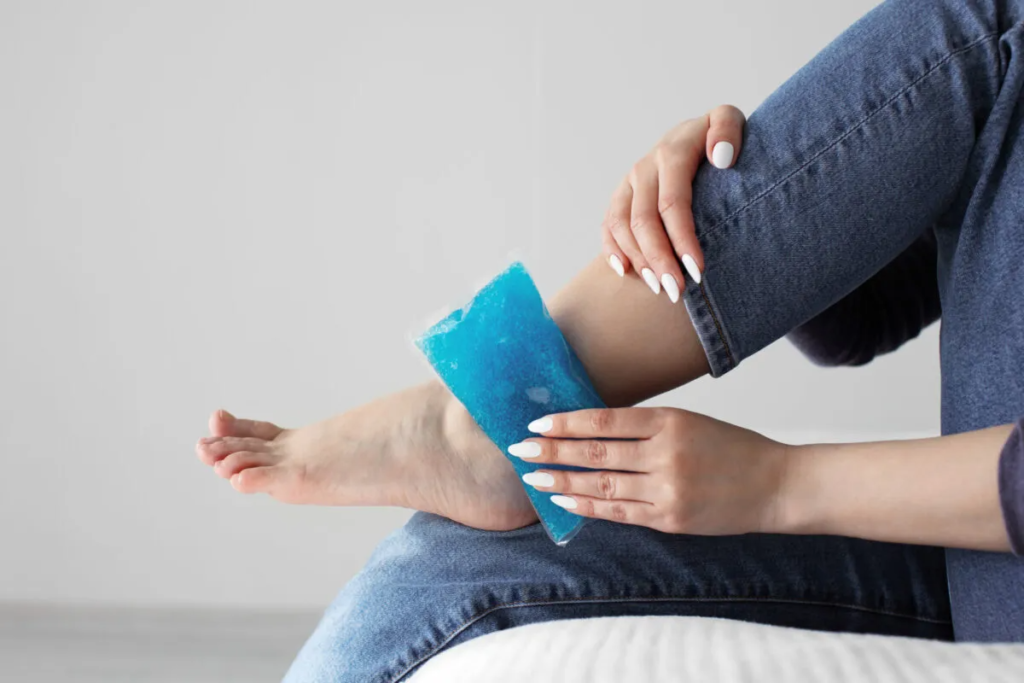
12. Keep Moving
While staying still is the best option for sore muscles, gentle movement is a great way to promote healing. Light activities like walking, swimming, or yoga help increase blood flow to the aching muscles. This delivers oxygen and nutrients to aid repair and flush out waste products that contribute to discomfort. So, instead of completely stopping your activity, opt for a low-impact session to keep your muscles loose and accelerate recovery.
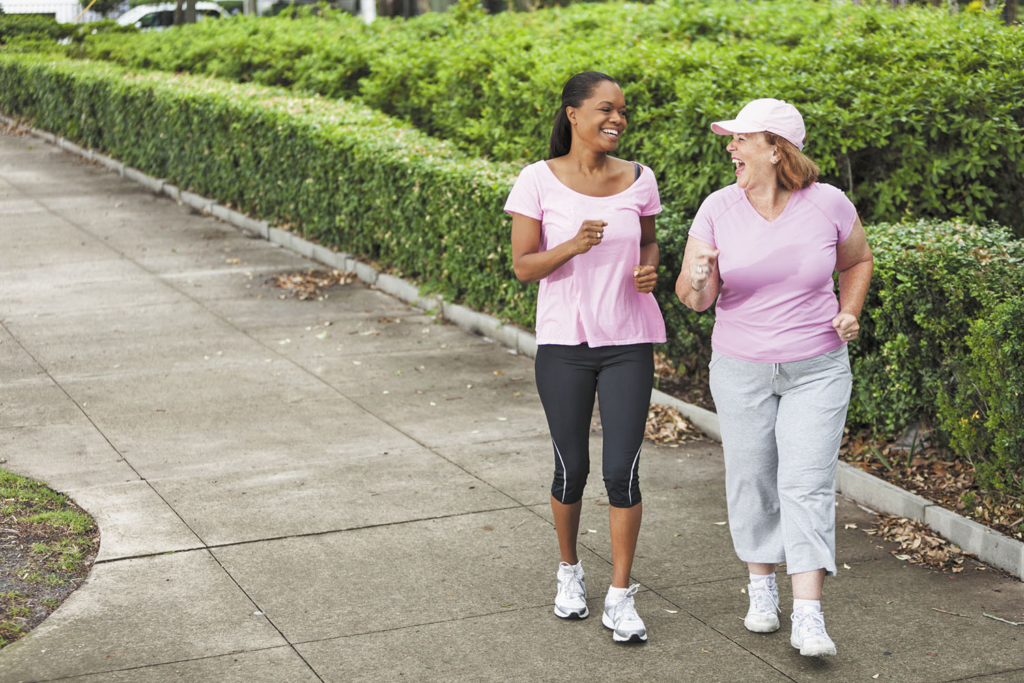
13. Rest
Rest is a crucial ingredient in the battle against muscle soreness. It allows your body to focus on repairing microtears in your muscle fibers, the primary cause of soreness. Adequate sleep is essential, as this is when muscle growth and repair are most active. Aim for 7-8 hours of sleep each night to give your muscles the downtime they need to rebuild stronger and come back feeling refreshed.

14. Light exercise
Don’t be fooled by the soreness. Light exercise is your friend when it comes to muscle recovery. Gentle movement like walking, yoga, or light resistance training with reduced weight helps increase blood flow to the sore muscles.
This influx brings fresh oxygen and nutrients to aid repair while flushing out waste products, contributing to discomfort. Think of it as a light massage from the inside out, promoting healing and getting you back to feeling your best faster.
